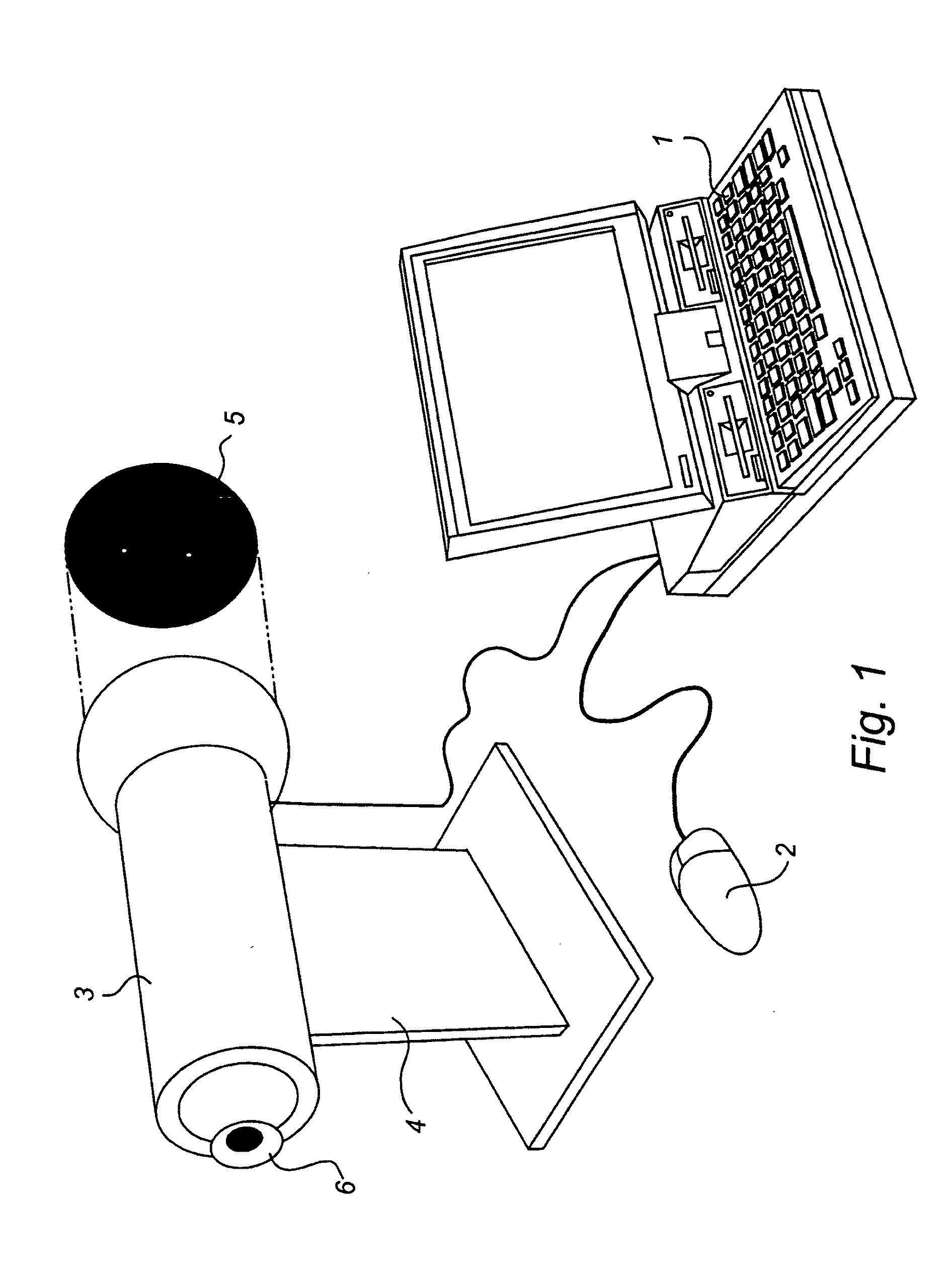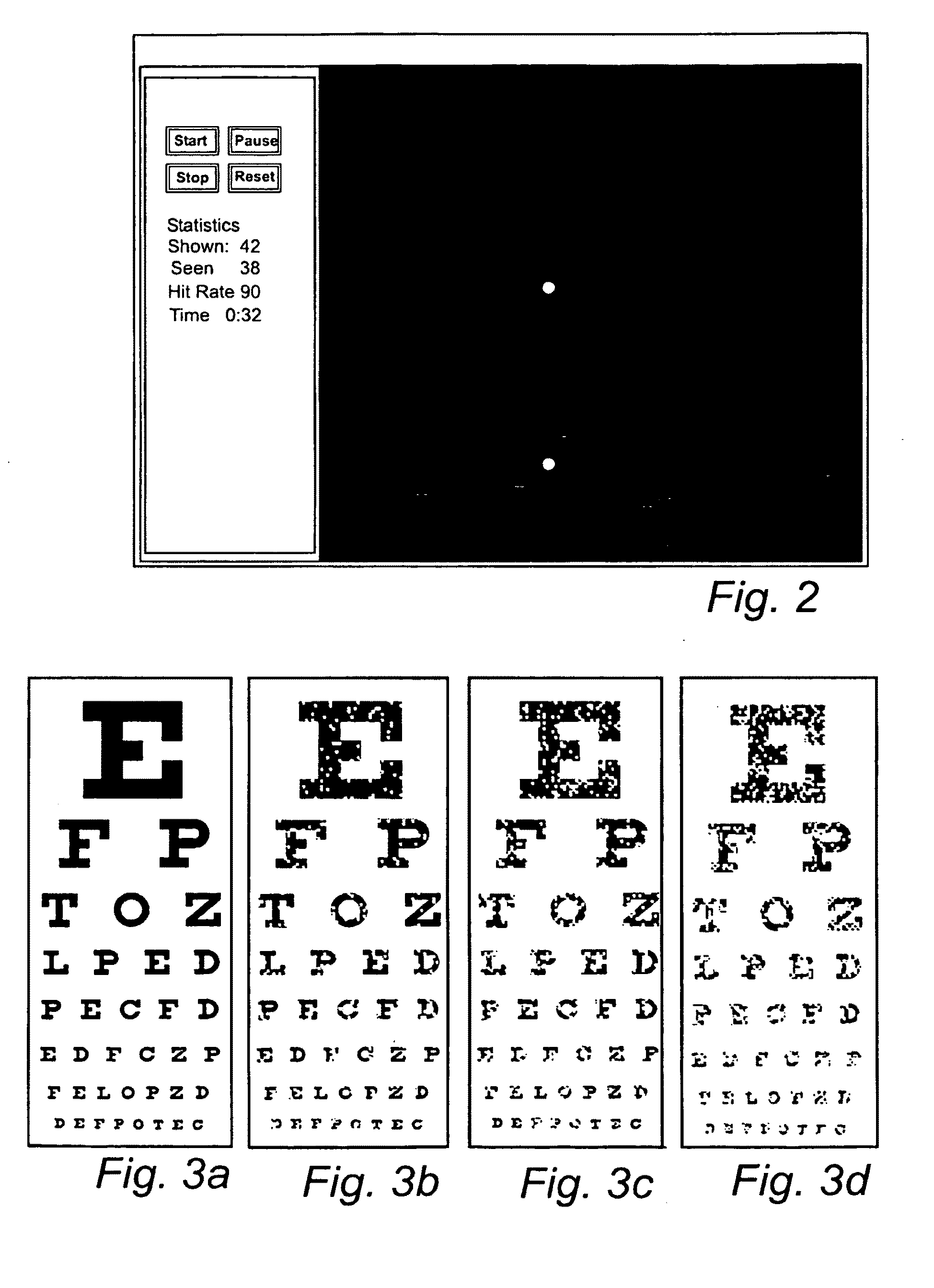Device and method for vision test
a vision test and device technology, applied in the field of devices and methods for vision testing, can solve the problems of not being able to return to exactly the same test position, not being able to grade the function level in one and the same neural unit, and difficulty in predicting the function level
- Summary
- Abstract
- Description
- Claims
- Application Information
AI Technical Summary
Benefits of technology
Problems solved by technology
Method used
Image
Examples
Embodiment Construction
[0027]FIG. 1 shows a vision testing assembly according to an embodiment of the present invention involving a PC 1, including a mouse 2, and a tube 3 on a stand 4. For easy understanding, an example of an image surface 5 with two lighted points is shown extracted from the tube 3. An eye 6 is illustrated in the viewing position.
[0028]FIG. 2 shows an example of the display image of the computer during testing. A vision test according to the present invention can be carried out in various ways. One way is to randomly and briefly light one or two points on the image surface and after that briefly light new sets of one or two other points. This is repeated until a sufficient number of points on the image surface have been lighted. The time during which a certain point is lighted should be less than 0.2 s, which is the latency of actively searching eye movements. Parallel to the above-described process, a viewer / patient registers by clicking the mouse how many points he has observed. By li...
PUM
 Login to View More
Login to View More Abstract
Description
Claims
Application Information
 Login to View More
Login to View More - R&D
- Intellectual Property
- Life Sciences
- Materials
- Tech Scout
- Unparalleled Data Quality
- Higher Quality Content
- 60% Fewer Hallucinations
Browse by: Latest US Patents, China's latest patents, Technical Efficacy Thesaurus, Application Domain, Technology Topic, Popular Technical Reports.
© 2025 PatSnap. All rights reserved.Legal|Privacy policy|Modern Slavery Act Transparency Statement|Sitemap|About US| Contact US: help@patsnap.com



